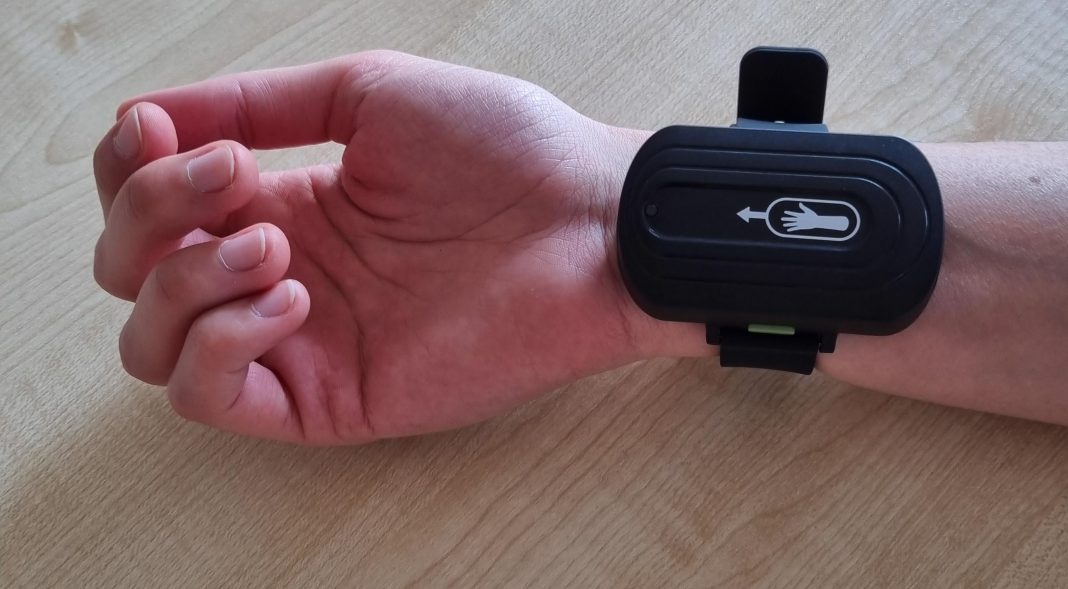A wearable wrist device that delivers electrical pulses to reduce the amount and severity of tics experienced by individuals with Tourette Syndrome (TS) is being tested in a UK-wide clinical trial.
Previous research by scientists from the University of Nottingham’s School of Psychology and School of Medicine used repetitive trains of electrical stimulation to the median nerve (MNS) at the wrist to entrain rhythmic electrical brain activity – known as brain oscillations – associated with the suppression of movements. They found that rhythmic MNS is sufficient to substantially reduce tic frequency and tic intensity, and remove the urge-to-tic, in individuals with TS.
University of Nottingham spin-out company Neurotherapeutics Ltd has now developed a prototype device, worn like a wrist-watch, that can be used by participants in their home setting with support from researchers in Nottingham.
Professor Stephen Jackson from the University of Nottingham and chief scientific officer at Neurotherapeutics Ltd said: “Our previous research successfully used pulses of electrical current, delivered at the wrist, to increase the strength of brain oscillations that ordinarily must be reduced in strength to generate a movement.
“This resulted in a significant reduction in tics and in many cases removal of the urge-to-tic. Now we are taking this further by testing the use of a wearable device in a larger group of individuals, this is a significant step towards realising our goal of having a commercial product available for the TS community within a couple of years.”
The trial will expand on the previous research and will involve 135 individuals with TS. The group testing the device will be shown how to use the device and will then be asked to use it at home at the same time each day for 15 mins for a period of one month. Selected people will also be videoed each day and each week participants will give feedback on their experience.
TS is a neurodevelopmental condition that is usually diagnosed between the ages of eight and 12. It causes involuntary sounds and movements called tics. Tics are repetitive, stereotyped movements and vocalisations that occur in bouts, typically many times in a single day, and are often preceded by a strong urge-to-tic, referred to as a premonitory urge (PU).
Barbara Morera Maiquez, head of research and development at Neurotherapeutics Ltd, is managing the trial. She said: “We’re really excited to be taking the next step with this research as we already know from previous work what a remarkable effect the stimulation has on reducing tics, especially in those people with the most severe tics. We hope that this trial will show that the device can be used effectively by people at home to control tics and help us achieve our aim of creating an effective treatment for Tourette Syndrome.”
The research is being funded by the charity Tourettes Action, NIHR Nottingham Biomedical Research Centre and Neurotherapeutics Ltd.


